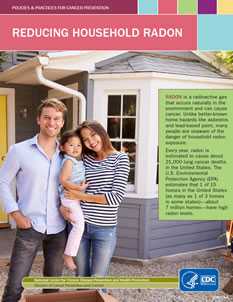What We Know About Radon
Radon is a radioactive gas that occurs naturally in most soil. It enters homes and other buildings through small cracks and holes in the foundation, where it becomes trapped and accumulates in the air. When people breathe in radon, it damages the lungs, which can cause lung cancer. According the U.S. Environmental Protection Agency (EPA), radon is the second leading cause of lung cancer in the United States.
Most radon exposure occurs in the home, where people spend the most time. Because radon has no taste, smell, or color, a home must be tested to find out how much radon is in the air. There is no safe level for radon, but EPA and the Surgeon General recommend fixing homes that have levels at or above 4pCi/L (picocurie per liter).
Radon is found throughout the United States and can vary widely from one home to another. Homes with high levels have been found in all states.
Home radon testing is simple and inexpensive. Many state radon programs offer free radon test kits, and there are inexpensive ways to fix and prevent high radon levels in homes.
- Page last reviewed: September 25, 2017
- Page last updated: September 25, 2017
- Content source:
- Maintained By:


 ShareCompartir
ShareCompartir
